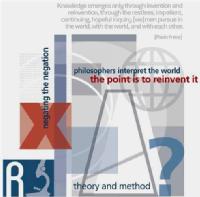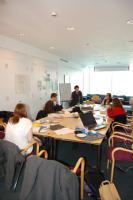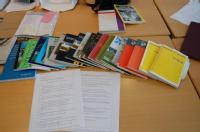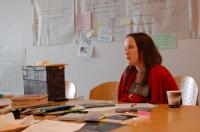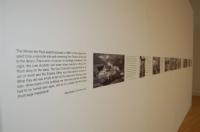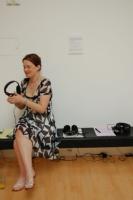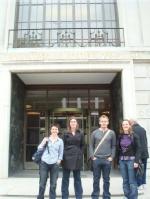Methods and Methodologies
Why this research?
The Reinvention Centre works, in multiple ways, to enable undergraduate students to undertake research and become integrated into the research cultures of their disciplines, departments and universities. Integral to the Centre’s work is a critical interrogation and reinvention of what university is, what it is for, and what are the roles and relationships of those who work and study in HE. We also aim to reinvent the spaces of the university via the design and development of new and renewed teaching, learning and research spaces, the re-design of curricula, and research into the significance of spatiality. This project brings a historical focus to these concerns, by exploring the construction of the university from a spatial perspective. We are particularly interested in what the planning, construction and occupation of the university tells us about how ideas and ideals about students and teachers, pedagogy and knowledge, are materialised in architectural forms. In turn, how are these ideas and ideals embodied, occupied and in some cases contested?
A collaborative approach
In keeping with the Reinvention Centre’s commitment to undergraduate research, this project involved a collaborative team comprising two first year undergraduate students (Laura Evans and Laura Moorhouse) one second year undergraduate (Hannah Lever) an MA student (Danny Wilding) and a member of academic staff (Cath Lambert). The students were recruited via an open advert to all History and Sociology undergraduate students. The selection process involved an application form and interview. The students were paid for their research time (for approximately seven hours per week), using the funding from the HEA History subject centre. The whole project ran for a year. Although members of the team took on different tasks at different times, a spirit of collaboration informed the distribution of work-load, decision making and analysis. We all participated in academic conferences, giving joint papers (see here for a full list of events and outputs). We met frequently to monitor progress and feedback findings. We maintained a shared database where all data was stored, and had ‘analysis days’ which enabled us to bring all the materials together and work on emerging themes.
Methods
-
Archival research
The Modern Records Centre (MRC) at the University of Warwick houses a number of excellent archives relating to higher education. We made particular use of materials from the Committee of Vice-Chancellors and Principals of the Universities of the UK (CVCP) and the University of Warwick Archives (UWA) which includes extensive material relating to the development of Warwick University itself including architectural designs, press reports, photographs of the university before and during its (ongoing) construction, financial information and masses of contextual documents providing information on the expansion of HE and the localised impact of national political interventions. Although we didn’t set out to focus on Warwick, it became evident that this aspirational university – built from scratch in the 1960s – provided an interesting and useful case-study for exploring wider questions about ‘the university’. It also made an excellent focus for the exhibition.
Through the MRC, we also accessed all the back copies of the University’s prospectuses. These were particularly useful for cross-referencing the spatial developments with curricular and pedagogic growth and change. We integrated these into the social reading space at the final exhibition.
There were challenges associated with working in the archives. None of us were experienced in archival research and we were learning as we went. This made progress slower and at times frustrating but it also made the learning more democratic, as there were no experts amongst us. Hannah became the expert, through her dedicated visits and time spent reading and cataloguing the materials. We gained scanned copies of some wonderful images from the UWA, and these formed part of the final exhibition. However, the quality was not great for enlarging and displaying the images. This resulted in them being much smaller than we had hoped. Finally, the archives we were using were put away for storage during the research, as the MRC was being refurbished. This limited our access and meant we had to be more strategic and make quick decisions. All these contingencies are, of course, part of the messy process of doing research of any kind. The experience also led to many critical discussions about the kinds of knowledge ‘hidden’ in archives, who can and does access it, and what can be done with the materials.
-
Interviews
Our overall methodology was attentive to the value of understanding space through stories. This is because although we can learn a great deal about the original intentions of the planners and architects of educational spaces from visual and textual designs and descriptions, students, teachers and other users have their actions, relations and emotions shaped by the spaces but also appropriate space for their own requirements, shaping the learning landscape through collective memories and stories which the formal representations in the archives do not always tell. Some of the photographs we found in the archives were used in photo-elicitation interviews with members of the university, who, in different ways, could offer the long view back to the university’s formative years. We undertook six such interviews and we talked with the University’s current Master Planners – MJP Architects, at their Spitalfields offices in London.
Cath, Danny and Hannah spent a few hours with MJP’s architects. There we were able to record our discussions with three architects who have worked on The Learning Grid and Library refurbishment and the rebuild of the Students’ Union. Together we poured over the many plans and drawings: actual representations of the campus and buildings and visions of how it could be, all mixed into an unplanned collage across the walls and tables. MJP’s architects have a really clear, and insightful, grasp of the University’s architectural history, going right back to the ‘fantasy’ drawings provided by Arthur Ling and the initial modernist designs provided by Yorke, Rosenberg and Mardell (YRM) Architects. Their current designs and visions of the future work both with and against these existing and imagined geographies.
For the University based interviews, Hannah and Laura M interviewed Hugh Gaston Hall. He was appointed to Warwick in 1964, making him one of the first members of teaching staff in the University. He retired in 1989 and was later made an Emeritus Reader in French. His thoughts and recollections, described by him as ‘opinions and memories of gossip rather than necessarily authentic history’, were prompted by a walking interview around the University. This took in the main buildings on central campus as well as the Learning Grid in University House, where Student Advisor Fran Kauzlaric answered their questions about the practices and ethos of the Grid. The interview finished in the Reinvention Centre at Westwood.
Laura M interviewed Dr Ken Flint in Biology. He began working at Warwick in October 1976. Laura took some of the photographic images from the archives, many of which are of Gibbet Hill, and together they identified some of the teaching rooms and communal study spaces which were fairly extensively photographed in use in the early days of the university.
Sarah Shalgosky, curator of the Mead Gallery and ‘curator of the University’, was interviewed by Laura E, beginning with a tour of the exhibition showing at the Gallery. Art and architecture have, of course, a close relationship, and the art at Warwick – including a great deal of indoor and outdoor installation art tells us a great deal about the development of the University. Sarah shared her understanding of how the University’s current artistic developments reflect contemporary shifts in knowledge production and the social relations of the campus. The fact that our research culminated in our own art intervention has given us opportunity to reflect on the aesthetic and sensory dimensions of our research activity and how our work not only comments on, but also contributes to, the aesthetic space of the University.
Hannah and Laura E interviewed Dr Ruth Cherrington. Ruth’s interview came about as a result of a chance encounter. Standing in the queue for the academic procession at the Summer 2009 Graduation Ceremony, Cath and Ruth got chatting about the project and Ruth talked about her childhood on the Canley estate watching the construction of the University, never thinking that so many years later she would be teaching there – in the Centre for Translation and Comparative Cultural Studies (The Centre closed in September 2009).
Professor Michael Shattock kindly came onto campus for an interview with Cath and Laura E at the Reinvention Centre at Westwood. Now based at the Institute of Education in London, Mike was at Warwick from 1969 – 1999, some of these years spent as University Registrar. This meant that not only did he have a wealth of information on the development of the University through formative times, but he was also instrumental in shaping the direction it would travel in. Mike was also responsible for the generation of much of the archive material we had been exploring.
Finally, Hannah and Laura M interviewed Jolyon Hall at his home in Warwick. Jolyon was Sub Librarian at the University from 1965 – 1996. The library was of particular interest to us, as the first building to be built on Central Campus, an iconic, modernist block initially housing not only books but also academic departments.
All interviews were recorded and transcribed. They were analysed alongside the other materials and extracts selected and approved with the interviewees for use in the exhibit. Here, we made use of different media so some of our interviewees’ comments interweaved with the images and architects’ drawings displayed on the wall; they could be heard via the headphones or read on ‘The Warwick Way’ display or on paper copies circulating the exhibition. You can access some of the interview extracts here.
Developing Theories
Throughout the research we all undertook literature searches, reading of empirical and theoretical material and visiting and presenting at seminars, conferences and relevant exhibitions to keep our developing ideas under discussion and review. We wrote reviews or detailed notes of readings, seminars, conference feedback and shared these via the database.
You can view a list of research events, read more about our identification of key themes and preliminary analysis and view a selection of literature.

